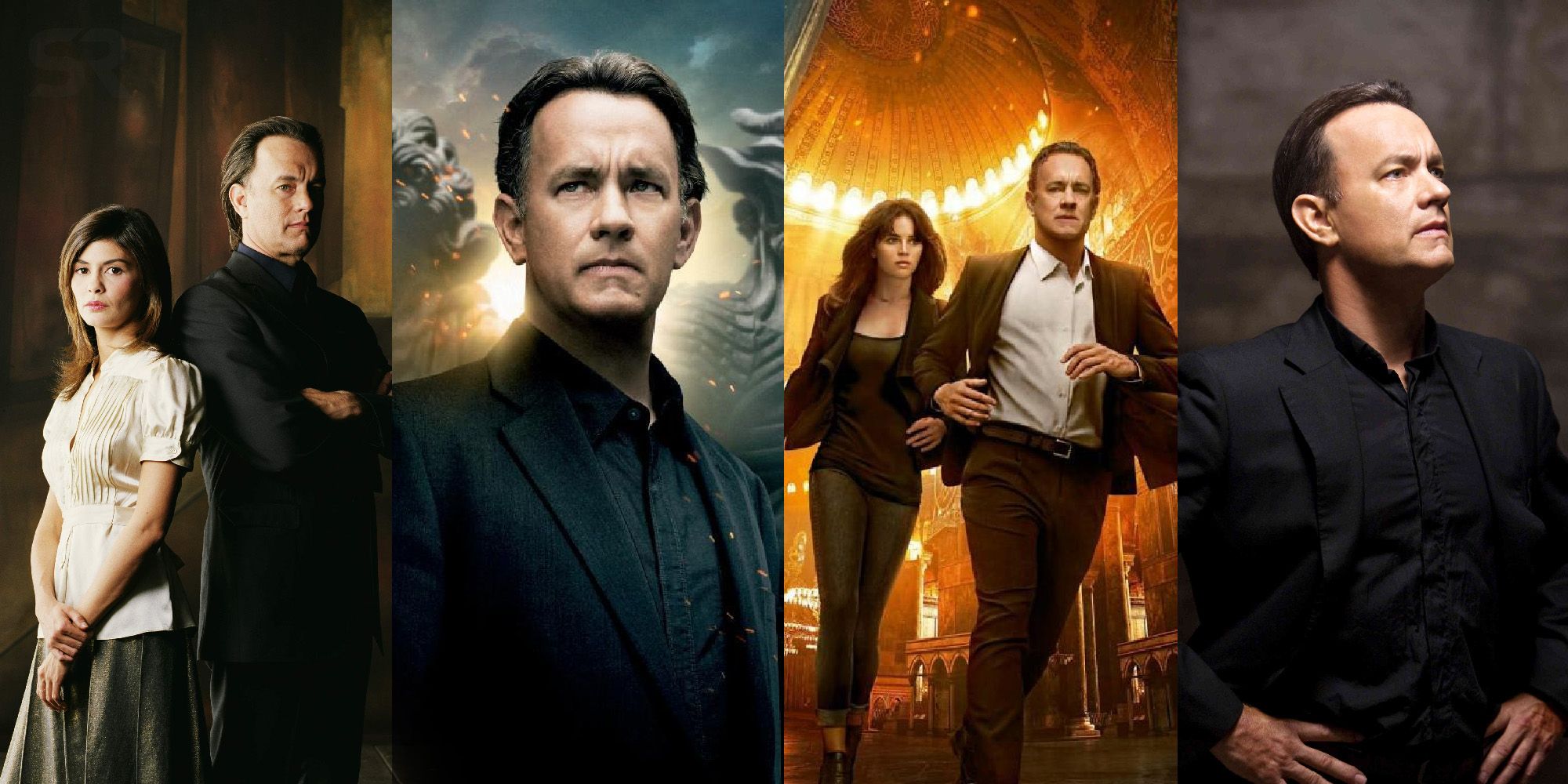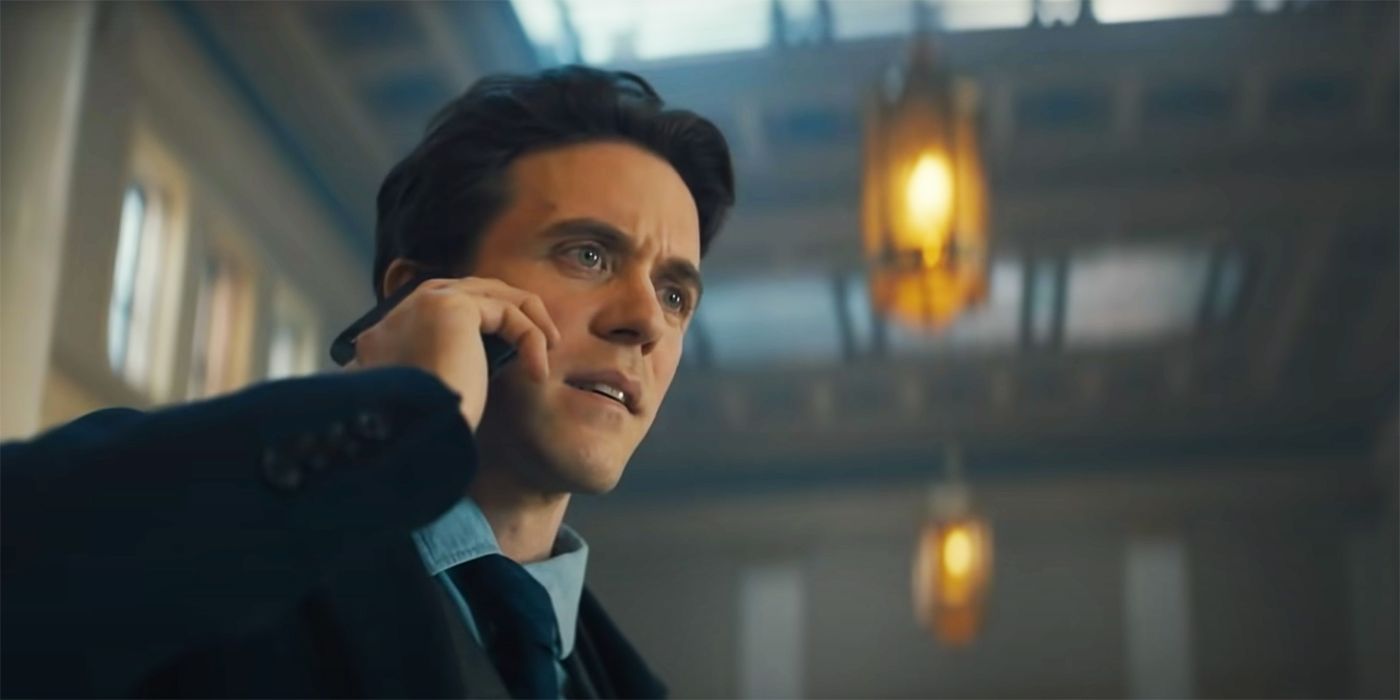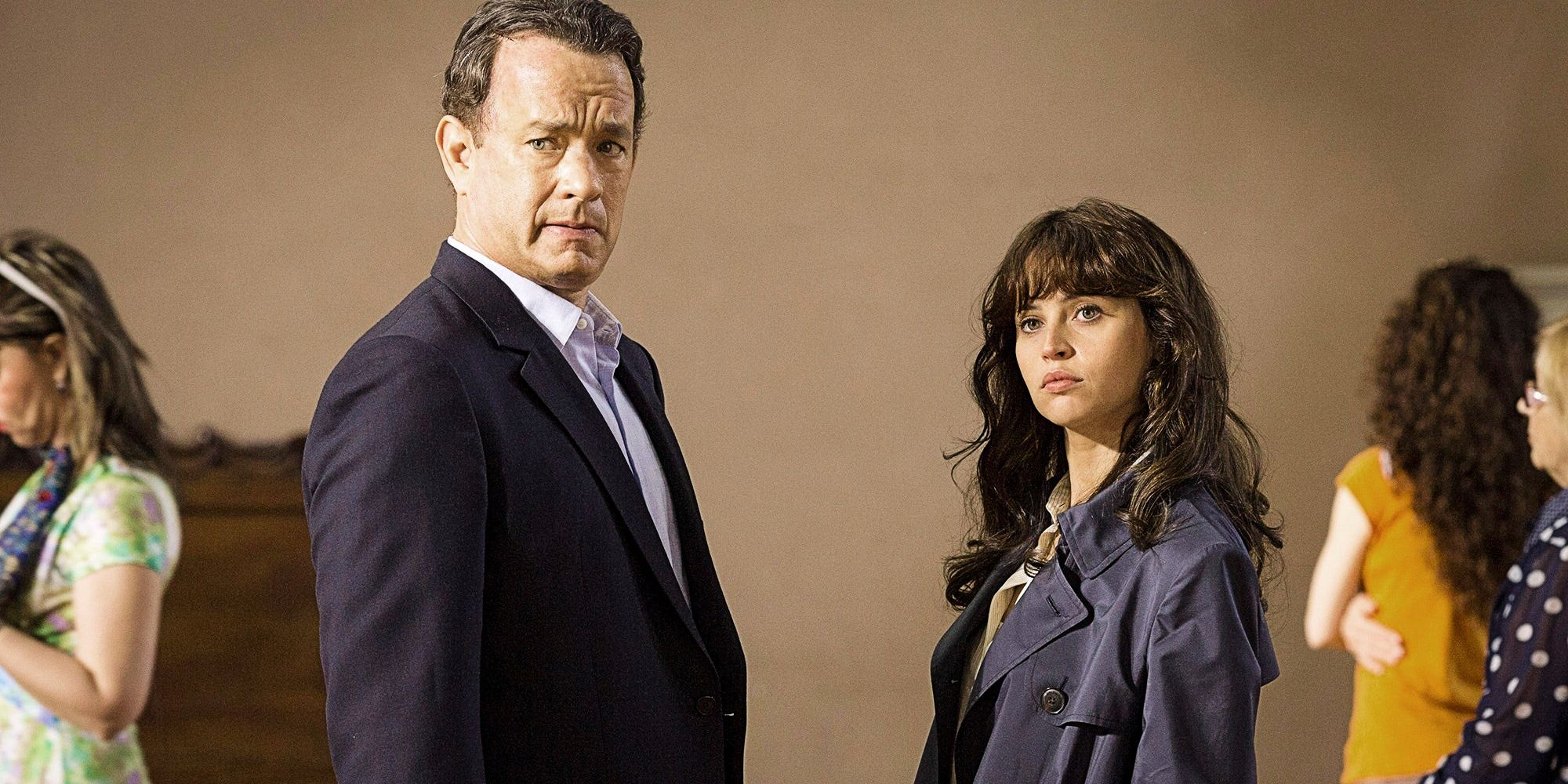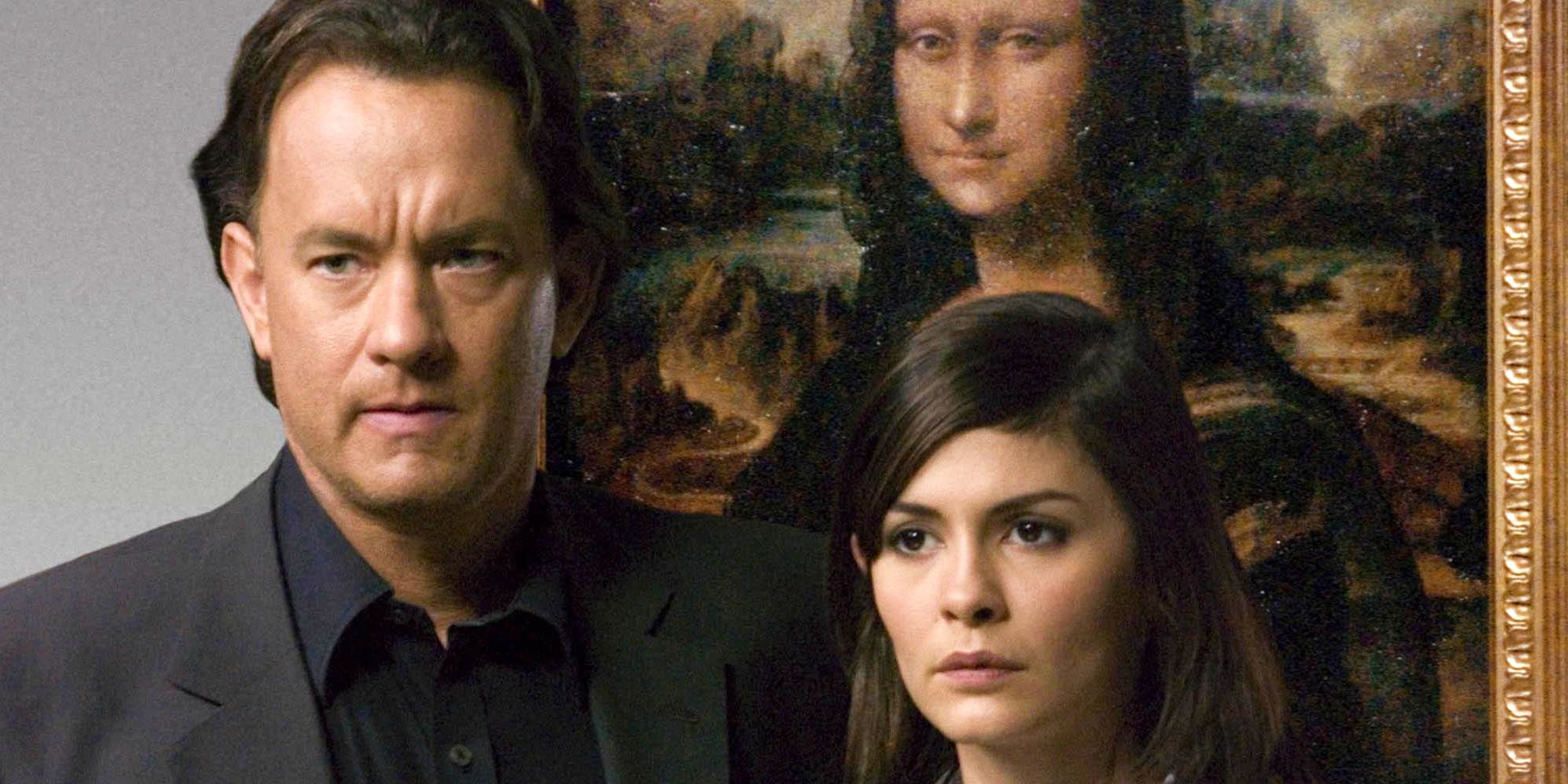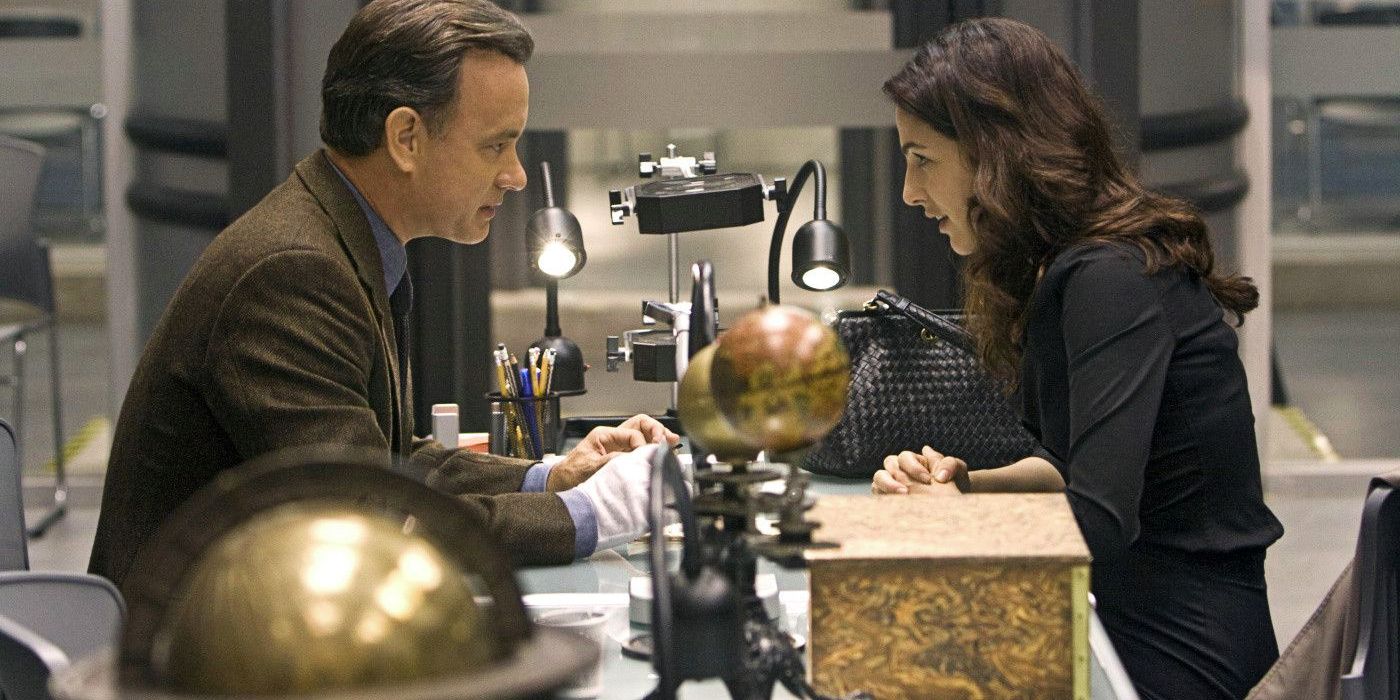How does every Dan Brown / Robert Langdon installment rank from worst to best? Based on the novel series written by Brown, the Robert Langdon stories center around Harvard symbologist Professor Robert Langdon (Tom Hanks), known for his in-depth knowledge of ancient history and symbols, and his eidetic memory. His creator Brown initially devised Langdon's character as a fictional alter ego of himself, which later grew to encompass "the man he wishes he could be" as Langdon's narrative develops across the narrative series.
Often found embroiled in adventures that are esoteric in nature, Langdon’s journey is traced in his eponymous movie trilogy consisting of The Da Vinci Code, Angels & Demons, and Inferno, as well as newcomer Peacock's 2021 prequel series The Lost Symbol. The Da Vinci Code, despite its age, still emerges as the most controversial entry in the Langdon series, owing in part to its central premise that involves a sacred bloodline created through the union of Jesus and Mary Magdalene. Other Langdon installments in Brown's franchise have included a plot to release antimatter over the Vatican, as well as a literal map of Hell, yet none have quite captured the intense social furor of Robert Langdon's first on-screen appearance.
Ranking all four Dan Brown / Robert Langdon installments, therefore, (three movies and one TV series) is no small feat given the divisive nature of several of the titles listed below. While box office success will not be considered a factor given the bias this creates in favor of Langdon's movie installments; critical consensus certainly plays a part in the current standings of each Dan Brown adaptation to date. Here’s every Dan Brown / Robert Langdon installment that has been released so far, ranked.
4. The Lost Symbol (2021)
Peacock's The Lost Symbol is still new on the fledgling streaming service. Despite much secrecy surrounding its unfurling premise, The Lost Symbol follows the early adventures of a young Harvard symbologist Robert Langdon, who finds himself pulled into a series of deadly puzzles when his mentor is kidnapped. The CIA forces Langdon onto a task force where he uncovers a chilling conspiracy involving deadly puzzles that link to the aforementioned disappearance of his beloved mentor.
The Lost Symbol has simply failed to capture the magic of some of its novel-based predecessors. Nor has it captured audience attention, for that matter, with The Lost Symbol's purpose dogged by pacing and narrative issues right out of the gate. The Lost Symbol's fundamental flaw so far is that its core is still pushing Langdon's paradoxical character as the main selling point of the series. Despite The Lost Symbol aiming to deliver a fresh look at Robert Langdon, he still translates as a man racing against the highest of stakes, but at the same boring audiences with half-baked plans based on symbol translations. Critical consensus has been no kinder to date here, with this latest Dan Brown adaptation branded as "bland" and containing "flat writing and strange pace" which serves to undermine the potential mysticism of a first Langdon story since 2016.
3. Inferno (2016)
Based on the eponymous Dan Brown novel, 2016 box office bomb Inferno chronicles Langdon’s exploits in Florence, Italy, where he finds himself suffering from short-term amnesia and hellish visions. While being plagued by assassins and government agents, Langdon is rescued by Dr. Sienna Brooks (Felicity Jones), and the duo attempt to navigate a labyrinth of clues, false trails, and dead-ends. The plot is heavily centered on Dante’s Inferno, which serves as a twisted inspiration for scientist Bertrand Zobrist (Ben Foster), who wishes to annihilate entire populations with the aid of a nuclear superweapon. While this might seem like a promising premise at first glance, Inferno does not work due to multiple factors, the key reason being the hackneyed and superficial portrayal of characters that once held substantial potential.
Inferno was always doomed despite Felicity Jones' presence as the third film in the Robert Langdon trilogy, with audiences and critics alike noticing a cookie-cutter pattern in all three movies at the time of its release. While it is not necessarily unoriginal to trace a set path for a key protagonist, such as Joseph Campell’s The Hero’s Journey, Langdon’s arc proves to be problematic to the point that his actions come off as hollow and painfully clichéd. Due to this reason, along with lackluster storytelling and the absence of genuine stakes, critical response to Inferno was overwhelmingly negative, with Rotten Tomatoes summing up the movie as “senselessly frantic and altogether shallow.” In essence, Inferno fails to impress, be it due to the lack of chemistry between the leads or the needlessly convoluted plot, making it the weakest link in the trilogy.
2. The Da Vinci Code (2006)
Much like the book, Howard’s The Da Vinci Code movie attracted massive criticism, especially from the Catholic Church, who urged audiences to boycott the film. Similar to all Robert Langdon narratives, the titular symbologist is contacted by the authorities in Paris, led by Inspector Fache (Jean Reno), who informs him of the murder of Louvre museum curator Jacques Saunière (Jean-Pierre Marielle). After suffering a gunshot wound, Saunière surprisingly manages to conceal a safety deposit key, strip and arrange himself in the position of Leonardo Da Vinci’s The Vitruvian Man, leaving a Fibonacci sequence and a footnote in his own blood to cryptologist Sophie Neveu (Audrey Tautou). While the circumstances around Saunière’s death in the book are as ridiculous and contrived as in the film, Solo's Ron Howard manages to inject thrill within these nonsensical sequences, which involve a series of seemingly startling revelations followed by tense chase scenes.
The two leads are pursued by dissenting factions with covert intentions, including the Opus Dei numerary Silas (Paul Bettany), spurring them to seek shelter at the French chalet of Grail historian, Sir Leigh Teabing (Sir Ian McKellen). The principal cast belts out satisfactory performances within the narrative framework offered to them, with an overdramatic, yet standout performance by McKellen, who imbues Teabing with the right amount of flair and fanaticism. This, in conjunction with Hans Zimmer’s ominous score, lends an aura of mystery to The Da Vinci Code, which shines through despite the plot’s absurdly labyrinthian nature and often-unconvincing historical allusions.
1. Angels & Demons (2009)
Tom Hanks reprises the role of history warrior Langdon in Angels & Demons, this time being summoned by the Vatican to Rome due to a missing canister of anti-matter stolen from the CERN Large Hadron Collider in Geneva. CERN scientist Vittoria Vetra (Ayelet Zurer) joins Langdon searching for a mysterious Illuminati terrorist, who kidnaps four of the preferiti running to be the new Pope, with Father McKenna (Ewan McGregor), the Camerlengo, assuming temporary control of the Vatican. The narrative of Angels & Demons is a typical Dan Brown-Esque race against time, with the protagonists needing to decipher cryptic clues that harken back to ancient secret societies and traditions. While jarring as the film races from one historical location to the next, the premise delivers a wildly entertaining result, with Angels & Demons ultimately harboring more substance than its other counterparts.
Despite featuring an implausible Langdon-cast plot that demands a high dose of suspension of disbelief, Angels & Demons received positive reviews by critics due to its fast-paced nature and balanced delivery of major plot points. Director Ron Howard utilizes exotic locations such as the interiors of the Sistine Chapel and the Pantheon to the film’s advantage, providing a stunning backdrop for the action to unfold. Angels and Demons’ merit lies in the fact that the cast seems greatly committed to Howard’s vision, slightly elevating the film above its controversial predecessor, The Da Vinci Code. While some might argue that these parameters are not quite enough to elevate a film to excellence, Angels & Demons, despite its shortcomings, remains the best entry in the Robert Langdon narrative series to date.

